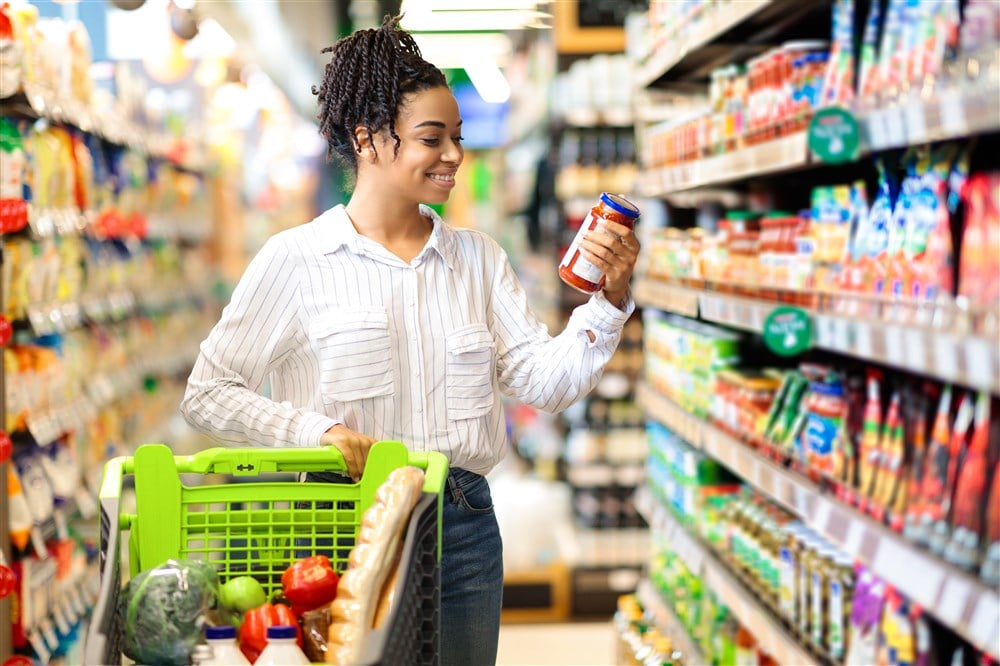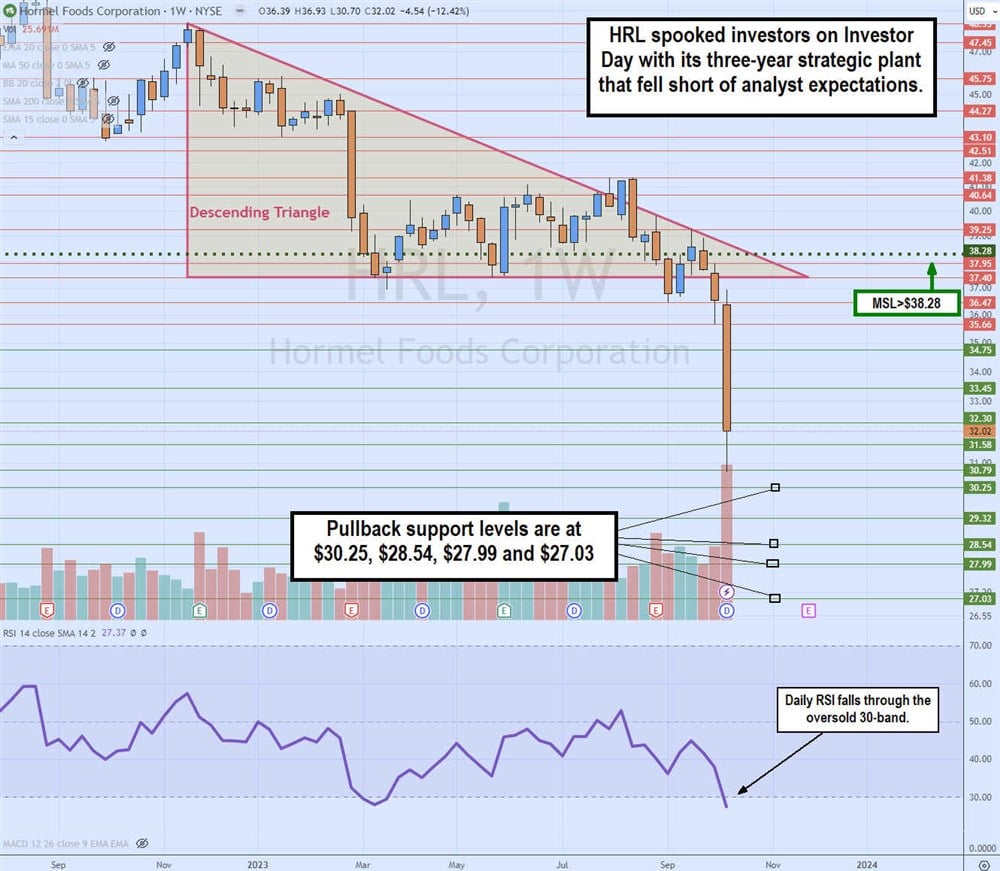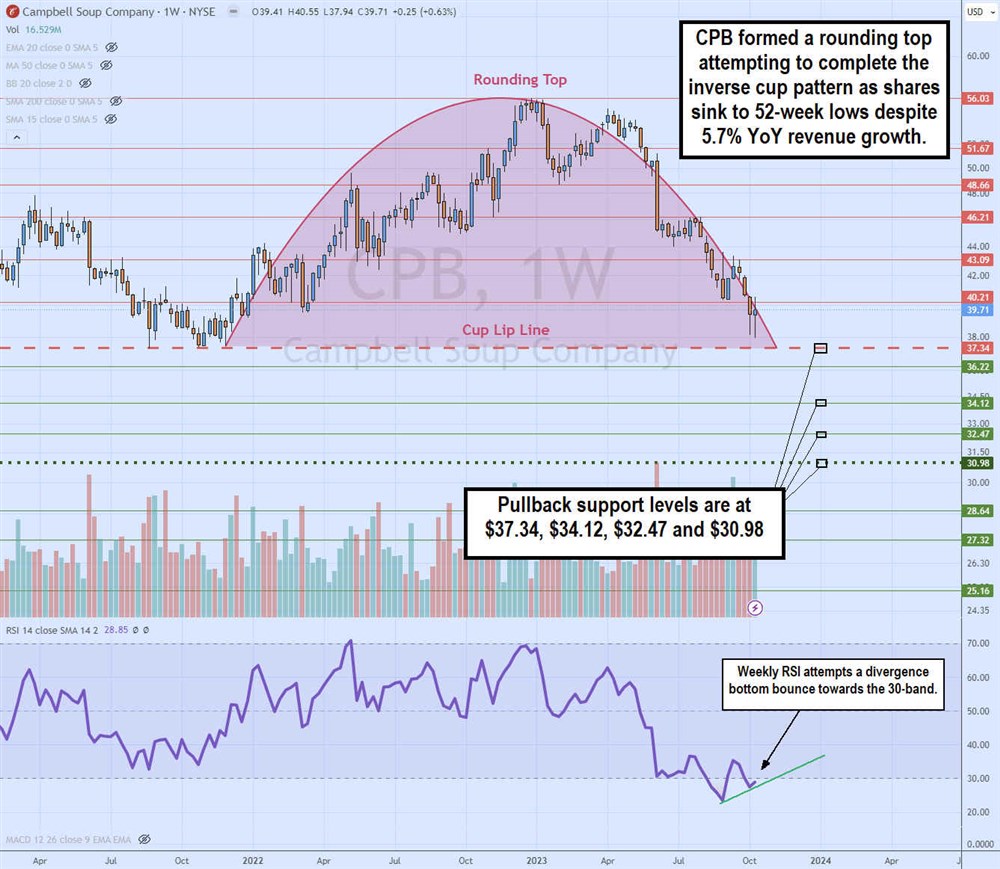
What did the two birds flying over K-Mart say to each other? Cheap, cheap. They might say the same thing about these two consumer staples stocks, trading near their 52-week lows. What a difference a year makes. It's hard to believe, but these stocks traded at 52-week highs in 2022. Consumer staples stocks were key benefactors during the COVID-19 pandemic as they experienced unprecedented demands from consumers stockpiling non-perishable food products to weather the pandemic. The surge in revenues eventually had to succumb to reversion and normalization. The question is whether that normalization may be coming too far. These two iconic brand-name consumer stocks may be bargains at these levels, especially with recession fears and the frigid temperatures predicted for this winter.
Hormel Inc. (NYSE: HRL)
Meat, snacks and food products retailer Hormel is well known for its household brands, likely in your cupboard or refrigerator. Sold worldwide in over 80 countries, its popular brands include SPAM (the meat kind), Planters, Skippy, Dinty Moore, Columbus Craft Meats, Jenni-O and Hormel. Its Applegate brand sells organic and natural meat bacon, sausage and hotdogs. Despite growing its brand, operating income has stagnated over the past few years.
Too Much of a Good Thing
It's possible to have too much of a good thing. SPAM has been around since 1937, created from pork shoulder, ham and spices. SPAM is short for spiced ham. Soldiers and consumers consumed over 150 million pounds of SPAM during World War II. It was cheap, convenient, portable, tasty, and storable, and soldiers could use the grease to lubricate their boots. The U.S. government issued so much SPAM that soldiers got sick of SPAM as it was served up to three times a day and seven days a week. This perfectly describes the around-the-clock repetitive junk e-mail netizens face daily, thus termed e-mail spam.
Normalization Continues
Hormel reported fiscal Q3 2023 earnings of 40 cents per share, missing estimates by 1 cent. Revenues few 2.3% YoY to $2.96 billion, falling short of the $3.04 billion consensus analyst estimates. Hormel sees in-line Q4 2023 revenues of $3.1 billion to $3.6 billion versus $3.43 billion analyst estimates. Full-year 2023 EPS was lowered from $1.61 to $1.67, falling short of the $1.73 analyst estimates.
Segment Summary
Normalization made YoY comparisons difficult after strong results for 2021 and 2022. Retail sales volume rose 1%, net sales fell 2%, and segment profit fell 7%. Hormel Black label bacon has been the fastest-growing national brand in the category over the last year, with volume growth of 13%. Hormel pepperoni is the number one selling pepperoni brand in the U.S. Foodservice sales grew 14% in China. Skippy peanut butter was launched in Germany. Calbee SPAM flavored potato chips were launched in Japan.
Foodservice volume rose 2%, net sales fell 3%, but segment profit rose 14%. International volume rose 10%, net sales fell 6%, and segment profit collapsed 50%. Segment profit shortfall was attributed mainly to sales in China.
Investor Day Fallout
On October 12, 2023, Hormel hosted its Investor Day. The company outlined a three-year strategic plan for earnings growth through modernization, transformation and strategic value capture. The company hopes to transcend income growth of over $250 million by 2026. Hormel also announced its largest wage increase with the United Food and Commercial Workers Union. The company reported $3 to $6 per hour wage increases, double bereavement leave, healthcare coverage protection and increased 401K and pension benefits. This triggered analyst reactions, collapsing shares to 52-week lows.
Analyst Actions
Barclay's analyst Benjamin Theurer cited that Hormel's target was much less than his $370 million operating income projection as he lowered the price target to $33 from $42 with an Equal-Weight rating. Piper Sandler analyst Michael Lavery cut his price target to $35 from $41 with a Neutral rating. Stephens analyst Ben Bienvenu cut his price target to $38 with an Equal-Weight rating.
Hormel analyst ratings and price targets are at MarketBeat. Hormel peers and competitor stocks can be found with the MarketBeat stock screener.

Descending Triangle Breakdown
The weekly candlestick chart on HRL illustrates the descending triangle breakdown pattern. The flat-bottom horizontal support at $37.40 was broken firmly on the Investor Day fallout. HRL failed to trigger the weekly market structure low (MSL) at $38.28, as each attempt was rejected. The weekly relative strength index (RSI) turned back down from the 45-band, falling through the oversold 30-band as shares collapsed to 52-week lows of $30.79. Pullback support levels are $30.25, $38.54, $27.99 and $27.03.
Campbell Soup Co. (NYSE: CPB)
Iconic soup and snack maker Campbell has been around since 1869. The company is well known for its canned soup products. The company has expanded its core product line to include meals, snacks and beverages. Its meals and beverage brands include Swanson, Prego, V8, SpaghettiOs and cooking sauces. Its snack brands include Pepperidge Farms, Kettle, Snyder's, Cape Cod, Goldfish and Late July. The company is acquiring Sovos Brands Inc. (NASDAQ: SOVO), which owns Rao's Homemade, Noosa Greek Yoghurts and Michael Angelo's, for $2.7 billion or $23 per share. The acquisition is expected to be accretive and generate cost synergies while driving growth. Sovos has been a robust growth machine, generating 22% YoY revenue growth in 2022 with a 13.9% trailing EBIT margin.
Stable and Steady
Campbell Soup reported its fiscal Q4 2023 earnings for the quarter ended July 2023 on August 31, 2023. They reported a profit of 50 cents per share, in line with consensus analyst estimates. The company generated a 5.7% YoY revenue growth of $2.1 billion, falling short of $2.6 billion consensus analyst estimates. Organic sales rose 5% YoY. Adjusted gross margin fell 70 bps to 30.6% from unfavorable volume/product mix. However, net price realization and supply chain productivity improvements offset higher cost inflation.
In-Line Guidance
Campbell sees full-year 2023 revenues down 0.5% to up 1.5%, ranging between $9.31 billion to $9.50 billion versus $9.35 billion analyst estimates. Campbell estimates fiscal full-year 2024 EPS of $3.09 to $3.15 versus $3.09 consensus analyst estimates. While volume is expected to decline during the first half of fiscal 2024, positive trends should lead to sequential improvements in the year's second half.
Campbell analyst ratings and price targets are at MarketBeat.

Weekly Inverse Cup Pattern
The weekly candlestick chart on CPB illustrates the inverse cup pattern that started in November 2021 at the $37.34 cup lip line. CPB rallied to $56.03 by January 2023, failing several attempts to break higher as it eventually formed rounding top. Shares continued falling lower as the weekly RSI oscillated through the 30-band oversold level. CPB attempts to stay above the cup lip line as the weekly RSI attempts to rebound through the 30-band with a divergence bottom. Pullback supports are at $37.34 inverse cup lip line, $34.12, $32.47 and $30.98 weekly MSL trigger.
